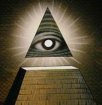LOS ANGELES, California (AP) -- Riots, dangerous standoffs and terrorism are crises for which the Los Angeles Police Department created its elite Metropolitan Division.So community activists wonder: Why was this helmeted, baton-wielding unit called to clear out a park after Tuesday's peaceful immigration march? And did their appearance somehow instigate the violence that ensued?"Their presence is provocative," said Carol Sobel, president of the National Lawyers Guild, who has worked with the LAPD to change policies, including when Metro officers are activated.People react when they see Metro officers "standing there, pointing ... weapons, in black uniforms with their shields down and it's like an enemy state," she said.During the melee at MacArthur Park, about 600 police officers, including 100 from the Metro Division, fired more than 240 rubber bullets and beat demonstrators and members of the news media with batons, but made no arrests, Police Chief William Bratton said. (Watch how people got hurt during the melee Video)Bratton said he was troubled by videotaped images of the police response and said four investigations are under way.Fox reporter Christina Gonzalez, who was pushed by officers, said she heard them laugh and say, "Double time, it's tussle time."The 288-member Metro squad was designed as a mobile crime-fighting unit that could be deployed to hotspots."Their whole day is training for that special thing," said civil rights attorney Connie Rice, hired by the civilian police oversight commission to investigate the department after another unit was accused of using excessive force. "You have cops like that and guess what? They find reasons to use their training."Capt. Scott Kroeber, commander of the division, did not return a message left at his office. The LAPD media office did not respond to a request for an interview about the unit.Bob Baker, president of the union representing officers, has cautioned against condemning the police before an investigation is complete.Since a similar clash during the 2000 Democratic National Convention, the department has been reluctant to call in the Metro Division to work crowd control. The result has been minimal friction with police at other demonstrations, including last year's much larger immigration march, Sobel and others said.Mayor Antonio Villaraigosa described Tuesday's incident as very similar to what happened at the convention. He said the investigation would determine whether police followed protocols set up afterward, some of them the result of lawsuits brought by Sobel.Three protesters have filed a federal lawsuit, alleging police violated their constitutional rights.Local television news camerawoman Patti Ballaz filed a claim against the city and Police Department alleging civil rights violations. She suffered a fractured wrist and injuries to her ankle and was hit in the breast with a police baton, said Kathy Pinckert, a spokeswoman for Ballaz's attorneys.Victor Narro, an attorney with the National Lawyers Guild who helped organize Tuesday's demonstration, said his group is considering whether to sue.Eugene O'Donnell, professor of police studies at New York's John Jay College of Criminal Justice, said Los Angeles' thin police force is partly to blame for Tuesday's deployment of Metro officers. New York can flood demonstrations with undercover and uniformed police who arrest unruly protesters before a situation escalates, he said.New York has more than 39,000 uniformed officers covering 320 square miles, whereas Los Angeles has about 9,000 patrol covering a city sprawling over 450 square miles.
read more | digg story

No comments:
Post a Comment